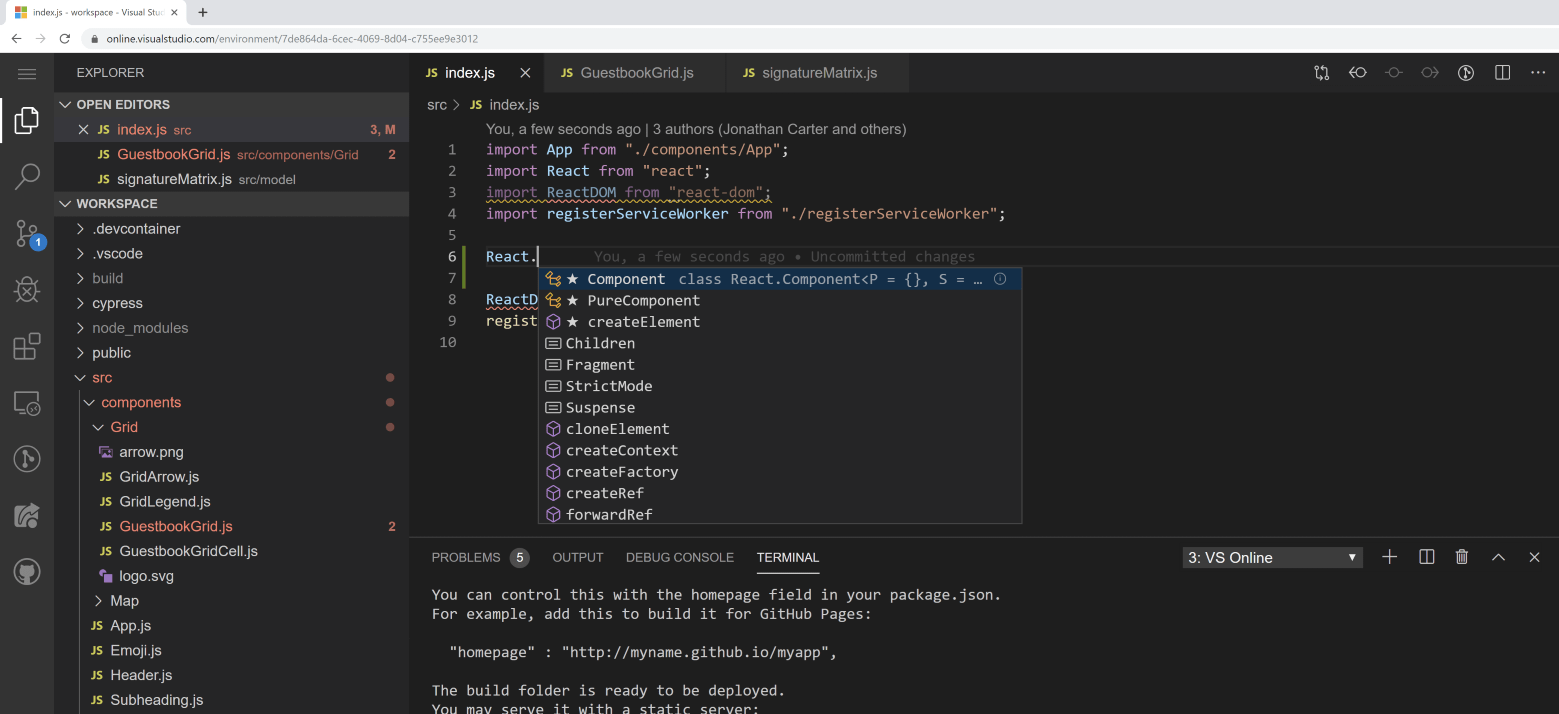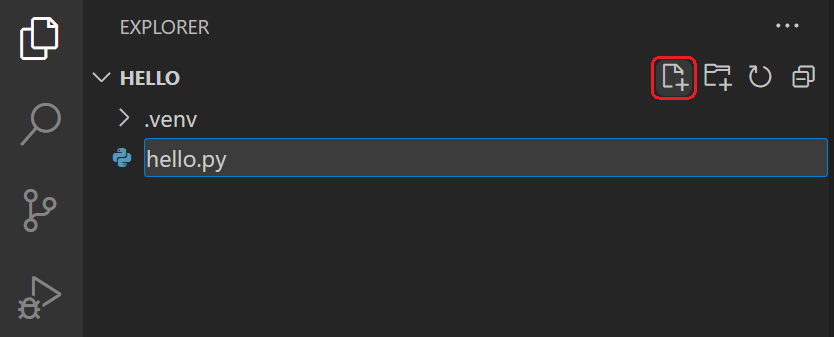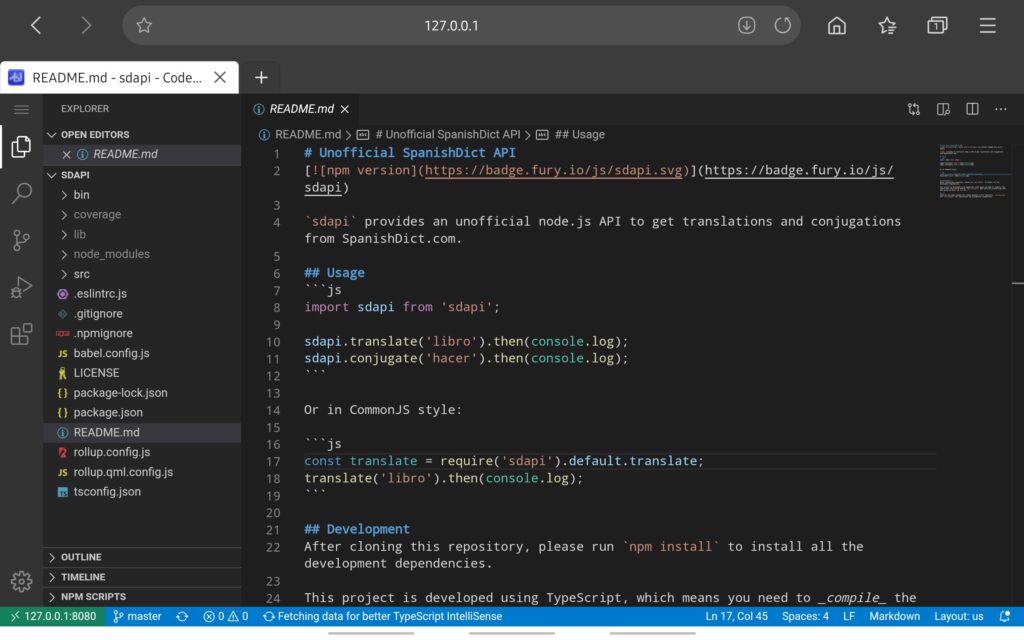The Remote - WSL extension enables you to run Visual Studio Code within the Windows Subsystem for Linux (WSL). Install the Remote - WSL extension. Prerequisite check. With the Remote - WSL extension installed, you will see a new Status bar item at the far left. With the latest Python extension for Visual Studio Code, there is a venvPath Setting: // Path to folder with a list of Virtual Environments (e.g. /.pyenv, /Envs, /.virtualenvs). 'python.venvPath': ', On Mac OS X, go to Code → Preferences → Settings and scroll down to Python Configuration. Visual Studio Code is a code editor redefined and optimized for building and debugging modern web and cloud applications. Visual Studio Code is free and available on your favorite platform. Many people use Anaconda to write Python code. But it is so cumbersome for small scripts and it is hard to manage.Instead, we can create our own virtual envi.
This guide discusses how to install packages using pip anda virtual environment manager: either venv for Python 3 or virtualenvfor Python 2. These are the lowest-level tools for managing Pythonpackages and are recommended if higher-level tools do not suit your needs.
Note
This doc uses the term package to refer to aDistribution Package which is different from an ImportPackage that which is used to import modules in your Python source code.
Installing pip¶
pip is the reference Python package manager. It’s used to install andupdate packages. You’ll need to make sure you have the latest version of pipinstalled.
Windows¶
The Python installers for Windows include pip. You should be able to accesspip using:
You can make sure that pip is up-to-date by running:

Linux and macOS¶
Debian and most other distributions include a python-pip package, if youwant to use the Linux distribution-provided versions of pip seeInstalling pip/setuptools/wheel with Linux Package Managers.
You can also install pip yourself to ensure you have the latest version. It’srecommended to use the system pip to bootstrap a user installation of pip:
Afterwards, you should have the newest pip installed in your user site:
Installing virtualenv¶
Note
If you are using Python 3.3 or newer, the venv module isthe preferred way to create and manage virtual environments.venv is included in the Python standard library and requires no additional installation.If you are using venv, you may skip this section.
virtualenv is used to manage Python packages for different projects.Using virtualenv allows you to avoid installing Python packages globallywhich could break system tools or other projects. You can install virtualenvusing pip.
On macOS and Linux:
On Windows:
Creating a virtual environment¶
venv (for Python 3) and virtualenv (for Python 2) allowyou to manage separate package installations fordifferent projects. They essentially allow you to create a “virtual” isolatedPython installation and install packages into that virtual installation. Whenyou switch projects, you can simply create a new virtual environment and nothave to worry about breaking the packages installed in the other environments.It is always recommended to use a virtual environment while developing Pythonapplications.
To create a virtual environment, go to your project’s directory and runvenv. If you are using Python 2, replace venv with virtualenvin the below commands.
On macOS and Linux:
On Windows:
The second argument is the location to create the virtual environment. Generally, youcan just create this in your project and call it env.
venv will create a virtual Python installation in the env folder.
Note
You should exclude your virtual environment directory from your versioncontrol system using .gitignore or similar.
Activating a virtual environment¶
Before you can start installing or using packages in your virtual environment you’llneed to activate it. Activating a virtual environment will put thevirtual environment-specificpython and pip executables into your shell’s PATH.
On macOS and Linux:

On Windows: Free roms psp dragon ball z shin budokai 3.
You can confirm you’re in the virtual environment by checking the location of yourPython interpreter, it should point to the env directory.
On macOS and Linux:
On Windows:
As long as your virtual environment is activated pip will install packages into thatspecific environment and you’ll be able to import and use packages in yourPython application.
Leaving the virtual environment¶
If you want to switch projects or otherwise leave your virtual environment, simply run:
If you want to re-enter the virtual environment just follow the same instructions aboveabout activating a virtual environment. There’s no need to re-create the virtual environment.
Installing packages¶
Now that you’re in your virtual environment you can install packages. Rocksmith free dlc download. Let’s install theRequests library from the Python Package Index (PyPI):
pip should download requests and all of its dependencies and install them:
Installing specific versions¶
pip allows you to specify which version of a package to install usingversion specifiers. For example, to installa specific version of requests:
To install the latest 2.x release of requests:
To install pre-release versions of packages, use the --pre flag:
Installing extras¶
Some packages have optional extras. You can tell pip to install these byspecifying the extra in brackets:
Installing from source¶
pip can install a package directly from source, for example: Winrar unlocker full version.
Additionally, pip can install packages from source in development mode,meaning that changes to the source directory will immediately affect theinstalled package without needing to re-install:
Installing from version control systems¶
pip can install packages directly from their version control system. Forexample, you can install directly from a git repository:
For more information on supported version control systems and syntax, see pip’sdocumentation on VCS Support.
Installing from local archives¶
If you have a local copy of a Distribution Package’s archive (a zip,wheel, or tar file) you can install it directly with pip:
Vscode Python Create Virtual Env
If you have a directory containing archives of multiple packages, you can tellpip to look for packages there and not to use thePython Package Index (PyPI) at all:
This is useful if you are installing packages on a system with limitedconnectivity or if you want to strictly control the origin of distributionpackages.
Using other package indexes¶
If you want to download packages from a different index than thePython Package Index (PyPI), you can use the --index-url flag:

If you want to allow packages from both the Python Package Index (PyPI)and a separate index, you can use the --extra-index-url flag instead:
Upgrading packages¶

pip can upgrade packages in-place using the --upgrade flag. For example, toinstall the latest version of requests and all of its dependencies:
Using requirements files¶
Instead of installing packages individually, pip allows you to declare alldependencies in a Requirements File. Forexample you could create a requirements.txt file containing:
And tell pip to install all of the packages in this file using the -r flag:
Freezing dependencies¶
Pip can export a list of all installed packages and their versions using thefreeze command:
Which will output a list of package specifiers such as:
Visual Studio Code Python Interpreter
This is useful for creating Requirements Files that can re-createthe exact versions of all packages installed in an environment.
